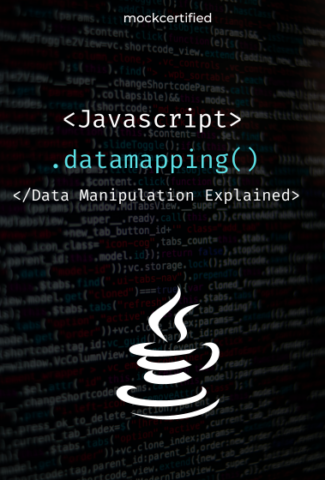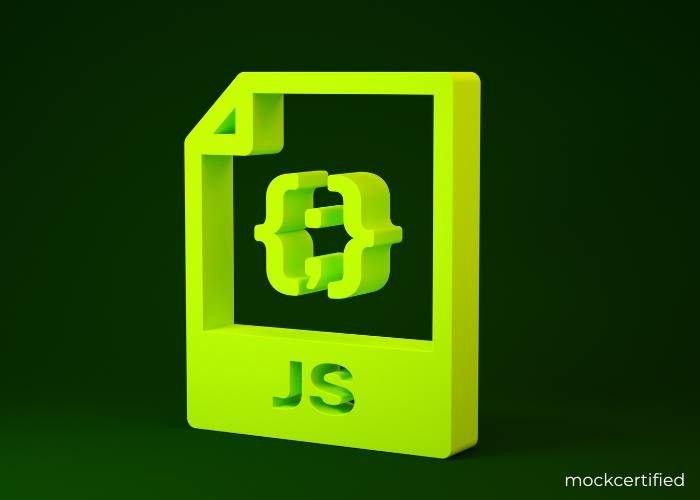
Introduction to JavaScript Mapping

JavaScript Mapping is a useful tool that helps developers work with data in arrays and objects.
It makes it easier to change or manipulate data, helping to create more interactive and dynamic web applications.
One of JavaScript’s key characteristics is its ability to effectively alter data. JavaScript mapping, using the map() method, provides developers with a powerful tool to transform arrays and simplify data manipulation.
Let’s explore into the concept of JavaScript mapping, understand its significance, and learn tips for effective implementation.
What is JavaScript Mapping?
JavaScript mapping is a method that allows developers to cycle through an array and modify its components based on a callback function that is given.
The JavaScript built-in function map() returns a new array with the results of applying the callback function to each item of the original array.
In contrast to the for Each() method, which just iterates through the array, map() modifies the data and produces a modified version.
Learn ethical hacking with JavaScript!
Why is JavaScript Mapping Important?
JavaScript mapping offers a concise and elegant way to manipulate data in arrays without resorting to complex loops.
It simplifies the data transformation process, making code more readable and manageable.
By utilizing mapping techniques, developers can avoid redundant code, improve efficiency, and achieve code reusability.
Understanding Key Concepts of JavaScript Mapping
Arrays and Mapping
At the heart of JavaScript mapping lies the concept of arrays. Arrays are collections of items that allow developers to easily store and handle data.
With the map() method, you can perform operations on each element of an array, facilitating data transformations.
Callback Functions
Functions in JavaScript can be provided as arguments to other functions. These functions, known as callback functions, are instrumental in mapping.
A callback function gets each array element and returns the updated value.
The Map() Method
The map() method is an in-built function in JavaScript arrays. It accepts a callback function as a parameter and applies it to each element of the array, resulting in the creation of a new array with the altered values.
Arrow Functions in Mapping
Arrow functions, introduced in ECMAScript 6, are often used as callback functions in JavaScript mapping. They provide a concise syntax and lexical this, making the code more compact and readable.
How to Use JavaScript Mapping in Practice

To utilize JavaScript mapping, you first need an array that you want to transform. Then, define a callback function that specifies the transformation logic.
When the mapping is complete, the map() method produces a new array with the updated values.
How to Map JSON in JavaScript?
JSON (JavaScript Object Notation) is a lightweight data exchange format that is extensively used for data transmission between a server and a web application.
Mapping JSON data in JavaScript allows developers to transform, extract, or modify specific elements from the JSON object with ease.
To map JSON in JavaScript, we can use the map() method, which works seamlessly with arrays and is also applicable to JSON arrays. This method loops through each member of the array or JSON array and produces a new array with the results of the callback function specified.
What is Hashmap in JavaScript?
A Hashmap, often known as an Object or a Dictionary, is a basic data structure in JavaScript. It enables developers to store and retrieve key-value pairs, making data storage and retrieval extremely efficient.
In JavaScript, objects serve as Hashmaps, where the keys act as unique identifiers, and the values represent the associated data.
The keys in a Hashmap must be unique, and they can be strings or symbols. When you need to access a specific value in the Hashmap, you can use the corresponding key to retrieve it quickly.
Types Of Maps In JavaScript
JavaScript offers several types of maps that developers can leverage to suit their specific needs:
Regular Arrays as Maps:
Regular arrays can serve as simple maps, where the index of the array acts as the key, and the value at that index represents the associated data.
JSON Arrays as Maps:
JSON arrays can be mapped similarly to regular arrays, using the map() method, to extract or transform specific elements.
Object (Hashmap) as Maps:
As discussed earlier, objects in JavaScript can be used as Hashmaps to store and retrieve key-value pairs efficiently.
Map Object:
ES6 introduced the Map object, a powerful data structure explicitly designed for mapping in JavaScript.
Unlike regular objects, Map allows any data type to be used as keys, making it more versatile. It also maintains the order of entries, ensuring that the insertion order is preserved.
WeakMap Object:
The WeakMap object is similar to Map, but it only allows objects as keys and holds weak references to the keys.
This means that if there are no references to the keys outside of the WeakMap, they can be automatically garbage collected.
Benefits of Using JavaScript Mapping Techniques
Improved Code Readability
JavaScript mapping produces code with a clean and succinct syntax, making it easier to read and understand. It eliminates the need for explicit loops, reducing code clutter and enhancing overall readability.
Simplified Data Manipulation
Mapping simplifies data manipulation, allowing developers to apply a single operation to all elements of an array effortlessly. This streamlined approach reduces the chance of errors and promotes code consistency.
Enhanced Performance
While JavaScript mapping is not the only method to manipulate arrays, it often outperforms traditional loop-based approaches. The optimized internal implementation of the map() method contributes to improved performance.
Code Reusability
By encapsulating data manipulation within callback functions, JavaScript mapping enables code reusability. Developers can apply the same callback function to multiple arrays or contexts, reducing redundant code.
Tips for Effective JavaScript Mapping
Use Descriptive Variable Names
When writing callback functions for mapping, choose descriptive variable names that convey the purpose of the transformation. This method improves code readability and helps other developers comprehend your code.
Handle Edge Cases Gracefully
Ensure your callback function can handle edge cases, such as empty arrays or unexpected data. Implement proper error handling to prevent unexpected behavior in your code.
Optimize for Performance
Although JavaScript mapping is efficient, it’s essential to optimize your callback functions for performance. Avoid performing resource-intensive operations within the callback to maintain overall application speed.
Common Mistakes to Avoid in JavaScript Mapping

Modifying Original Data
A common mistake in JavaScript mapping is accidentally modifying the original array within the callback function.
Keep in mind that the map() function generates a new array with the modified values, therefore the old array should be left alone.
In order to avoid this, make sure your callback function provides a new value while leaving the old data alone.
Forgetting to Return Values in Callbacks
Every callback function used with the map() method must return a value for the transformation to take place correctly.
Failure to include a return statement or returning an undefined value might result in unexpected effects.
Check your callback functions to ensure they deliver the expected data.
Nesting Too Many Map() Methods
While the map() function is useful, layering several map() calls within one another might make your code more difficult to comprehend and maintain.
Instead, consider breaking down complex operations into separate steps or using other array methods like filter() and reduce() when appropriate.
Conclusion

JavaScript mapping, leveraging the map() method, is a valuable technique for developers to transform data in arrays efficiently.
Developers may simplify data manipulation, increase code readability, and improve efficiency by knowing essential JavaScript mapping concepts such as arrays, callback functions, and arrow functions.
Real-world examples demonstrate how mapping can be applied to various scenarios, offering code reusability and streamlined operations.
However, it is essential to avoid common pitfalls, such as modifying original data within callbacks and forgetting to return values, to ensure the smooth implementation of JavaScript mapping.
Take advantage of JavaScript mapping in your projects to elevate your data manipulation capabilities and create more robust and readable code.
Can I use the map() method on objects, or is it only for arrays?
The map() method in JavaScript is specifically designed for arrays. It iterates through each element of the array and applies a transformation function to create a new array with the results. However, you cannot use map() directly on objects. If you want to manipulate object properties, you can consider alternative approaches like using Object.keys() or Object.entries() along with map().
Is there a performance difference between using map() and a traditional for loop for mapping arrays?
In most cases, the performance difference between using map() and a traditional for loop for mapping arrays is negligible. Modern JavaScript engines have optimized the map() method to perform efficiently. However, in certain scenarios where performance is critical, direct for loops may offer a slight advantage due to reduced function call overhead.
How can I handle errors within the callback function used with map()?
The map() method does not provide a built-in error handling mechanism. Therefore, it is essential to handle errors manually within the callback function. You can use try-catch blocks to catch and handle exceptions. Alternatively, consider using the map() method in combination with other error-handling techniques, such as Promise.all() in the case of asynchronous operations.
Can I chain multiple map() methods together for complex data transformations?
Yes, you can chain multiple map() methods together to perform complex data transformations. This technique is commonly known as “mapping pipelines.” Each map() method in the pipeline processes the data sequentially, allowing you to perform a series of transformations in a concise and readable manner.
Is it possible to use the map() method with real-time data updates in web applications?
Yes, you can use the map() method with real-time data updates in web applications. If your data source receives real-time updates, you can apply the map() method to the updated data to reflect the changes in the user interface dynamically. To handle asynchronous data updates, consider using asynchronous mapping techniques, such as mapping with Promises or async/await.
How can I use map() to perform deep cloning of an array of objects?
While the map() method creates a new array with transformed elements, it performs a shallow copy. To achieve deep cloning of an array of objects, you can combine map() with methods like JSON.stringify() and JSON.parse() or use libraries like Lodash’s cloneDeep() to create a fully independent copy of the array and its nested objects.
What are some best practices for optimizing JavaScript mapping performance?
To optimize JavaScript mapping performance, consider the following best practices:
Use the map() method only when necessary, as it creates a new array.
Avoid unnecessary callbacks or computations within the callback function.
Consider using other array methods like forEach() or for loops for operations that do not require creating a new array.
Implement memoization techniques to cache previously computed results for repetitive mapping operations.
Can I use map() to modify the original array directly?
No, the map() method does not modify the original array. It returns a new array with the transformed values while leaving the original array unchanged. If you need to modify the original array, you should use other array methods like forEach() or traditional for loops.
Is it possible to use map() with multi-dimensional arrays?
Yes, you can use map() with multi-dimensional arrays. Since map() is a higher-order function, you can nest multiple map() methods to traverse and manipulate multi-dimensional arrays. This allows for elegant and concise data transformations in complex data structures.
Are there any performance considerations when using map() with a large dataset?
When using map() with a large dataset, it’s essential to be mindful of performance. While map() is generally efficient, mapping large arrays can have performance implications, especially when combined with complex callback functions. Consider using asynchronous mapping for large datasets, and explore other performance optimization techniques like chunking or parallel processing when dealing with extensive data.



